Step off the 1 train at Van Cortlandt Park – 242 St in the Bronx, and you’ll find yourself steps from one of the largest parks in New York City. Van Cortlandt is a sprawling 1,146-acre natural oasis (that's larger than Central Park!), and while it's home to many things, we're here to learn about a major monument to transit history that's just a 10-minute walk from the end of the 1 line.
Tucked away in the southern portion of Van Cortlandt Park, there are 13 large stone pillars sitting somewhat unceremoniously in a woodland area. These stones are a part of one of the city's most iconic transit hubs, and together, they make up an urban Stonehenge, or as some have dubbed it: Cortlandthenge.
A Brief History of the Grand Central Stones
The stone pillars were placed here in November 1905 by New York Central Railroad, each sample sent by a quarry to help determine which material would be used to build a new Beaux-Arts train station in Manhattan: Grand Central Terminal.
This weathering experiment lasted for years, and was overseen by the railroad and GCT's architecture firms Reed & Stern and Warren & Wetmore. The samples sent in from all over the country were massive, which was a bit unusual, but fitting for the project at hand.
Ultimately, two stones from this lot were chosen for Grand Central Terminal: the Indiana limestone and the Stoney Creek granite (the former was popular all over the city during the City Beautiful movement). The limestone can be found on the upper portion of Grand Central Terminal, and the granite at the shopfront level. But you can see now, 118 years later, that any one of them could have likely stood the test of time.
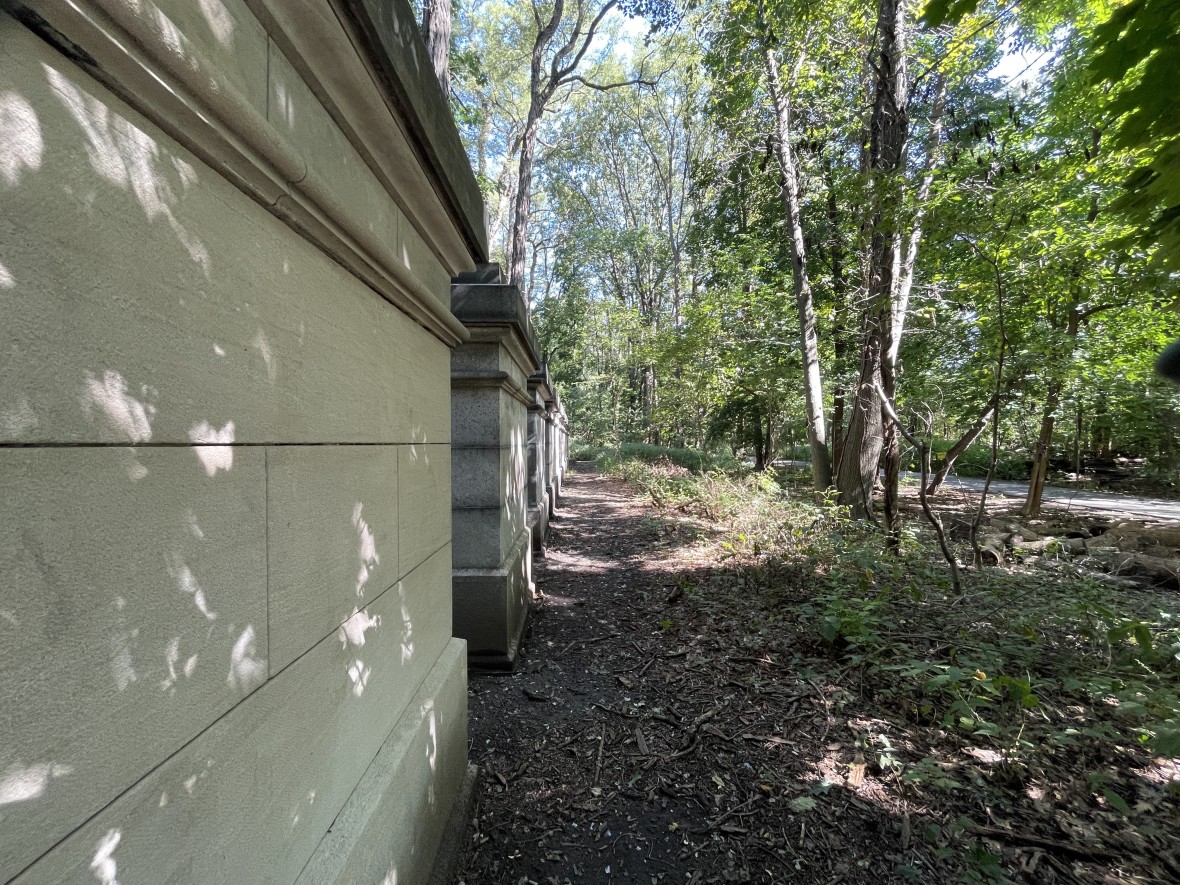
While there were originally 15 pillars, only 13 remain today (it’s unclear what happened to the other two, if they ever existed). There is no plaque indicating what the stones are, so any passerby who takes notice of them would have to be curious enough to seek out their origin.
In 2017, the Municipal Art Society (MAS) received a grant through their Adopt-a-Monument program that allowed them to clean and conserve the stones, which each stand around 10-feet tall. At the time, some of the tops of the stones had fallen off, and they were covered in graffiti, but stop by today and you'll see the natural stone surfaces (they're now regularly cleaned and maintained).
Phyllis Cohen, who has run the MAS program for decades, said she felt MAS had a natural connection to the stones, as they worked with Jacqueline Kennedy Onassis and Kent Barwick (the former Landmarks Preservation Commission head) to save Grand Central Terminal in the 1970s when it was nearly lost to a redevelopment project.
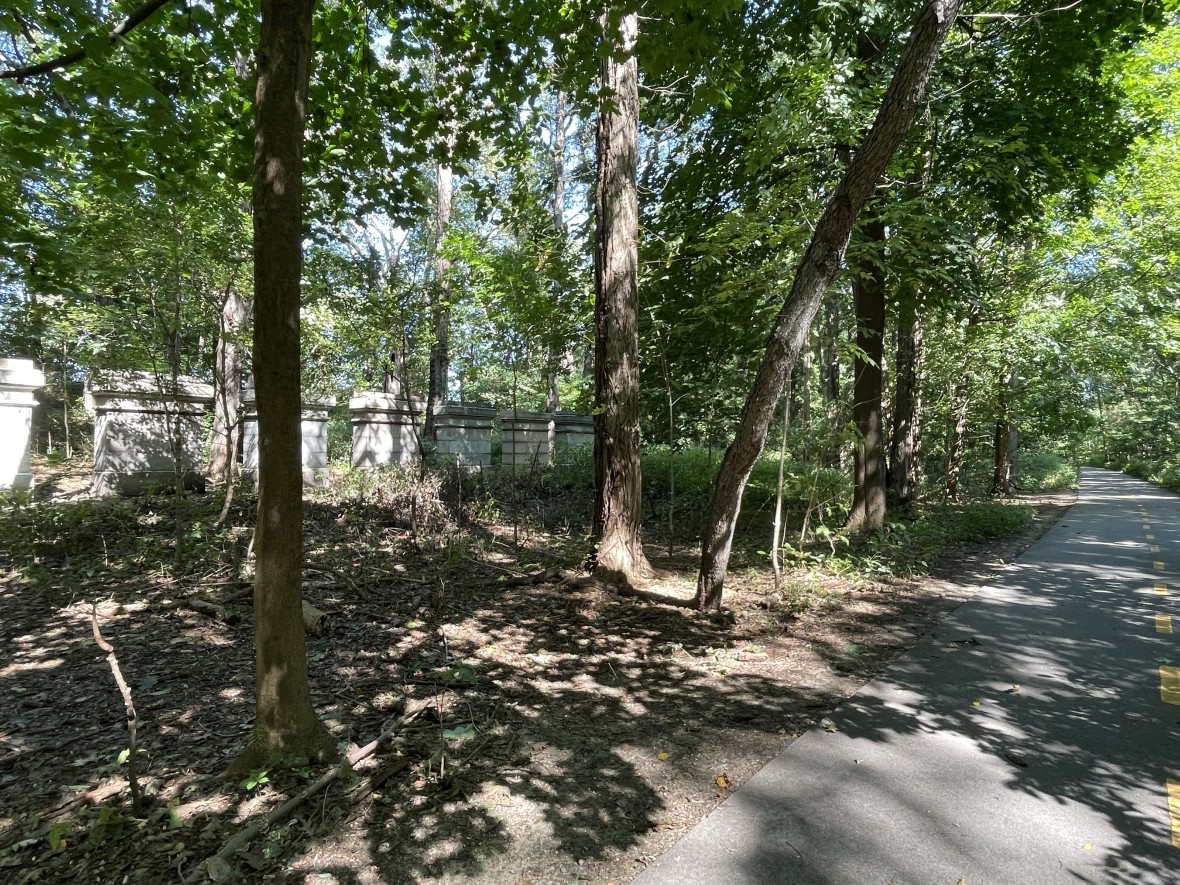
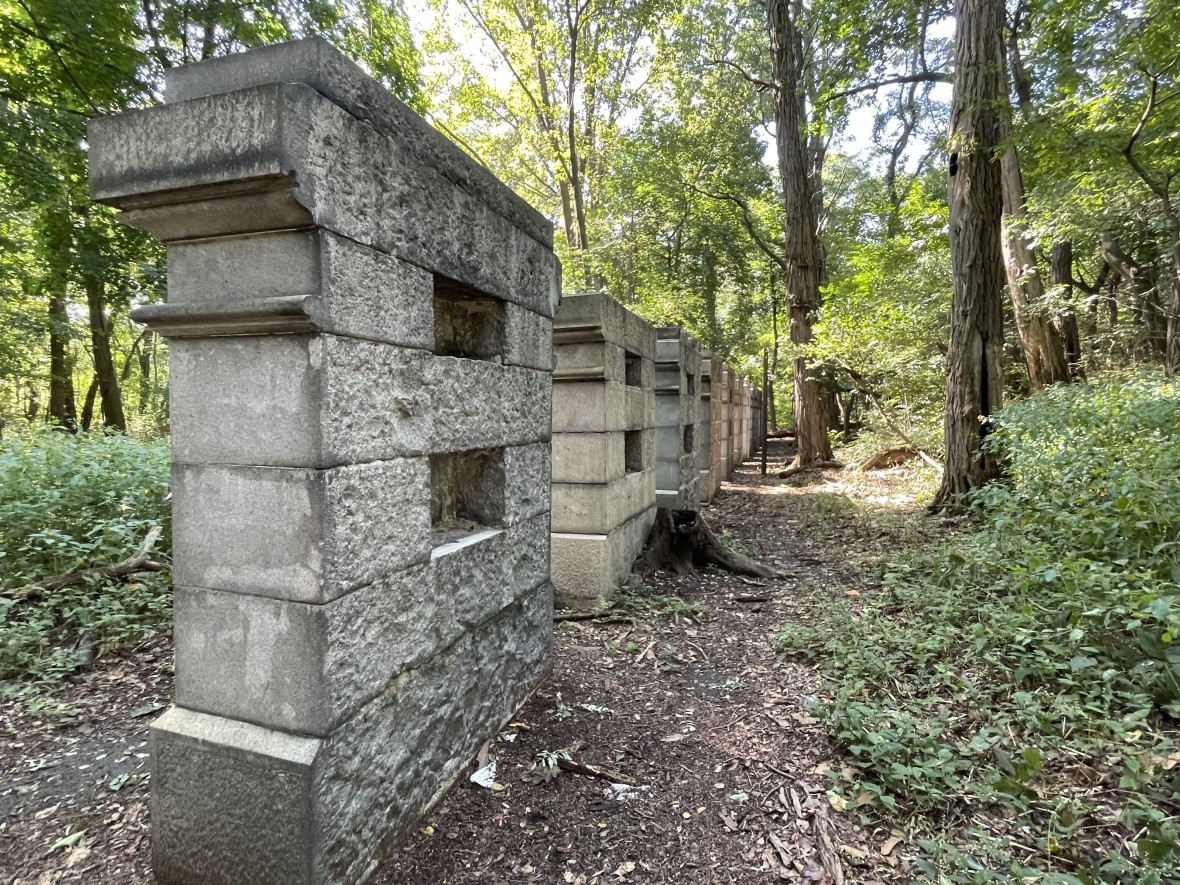
While they now sit along Van Cortlandt Park’s nature trail, when the stones were originally set down here they were in close proximity to the railroad’s Putnam Branch, which had one stop inside of the park. This branch served passenger trains from 1870 to 1958, and was used for freight trains until 1980.

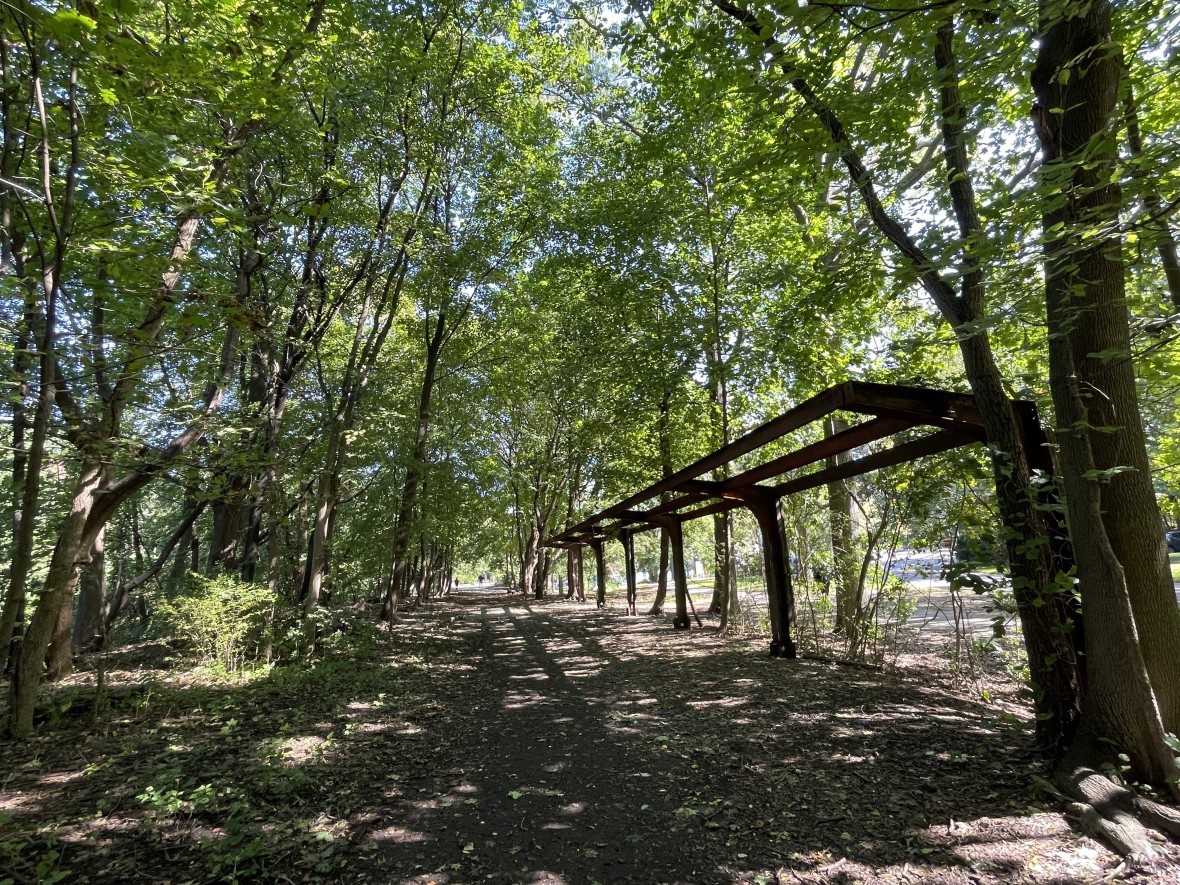
There's more to explore around here as well. When departing the stones, take a right and about a minute or so later you'll be able to see remnants of the Putnam Branch. Part of the old station is still standing, as is the old Putnam Branch Railroad Bridge and tracks.
Get to Know the 242nd St — Van Cortlandt Park Station
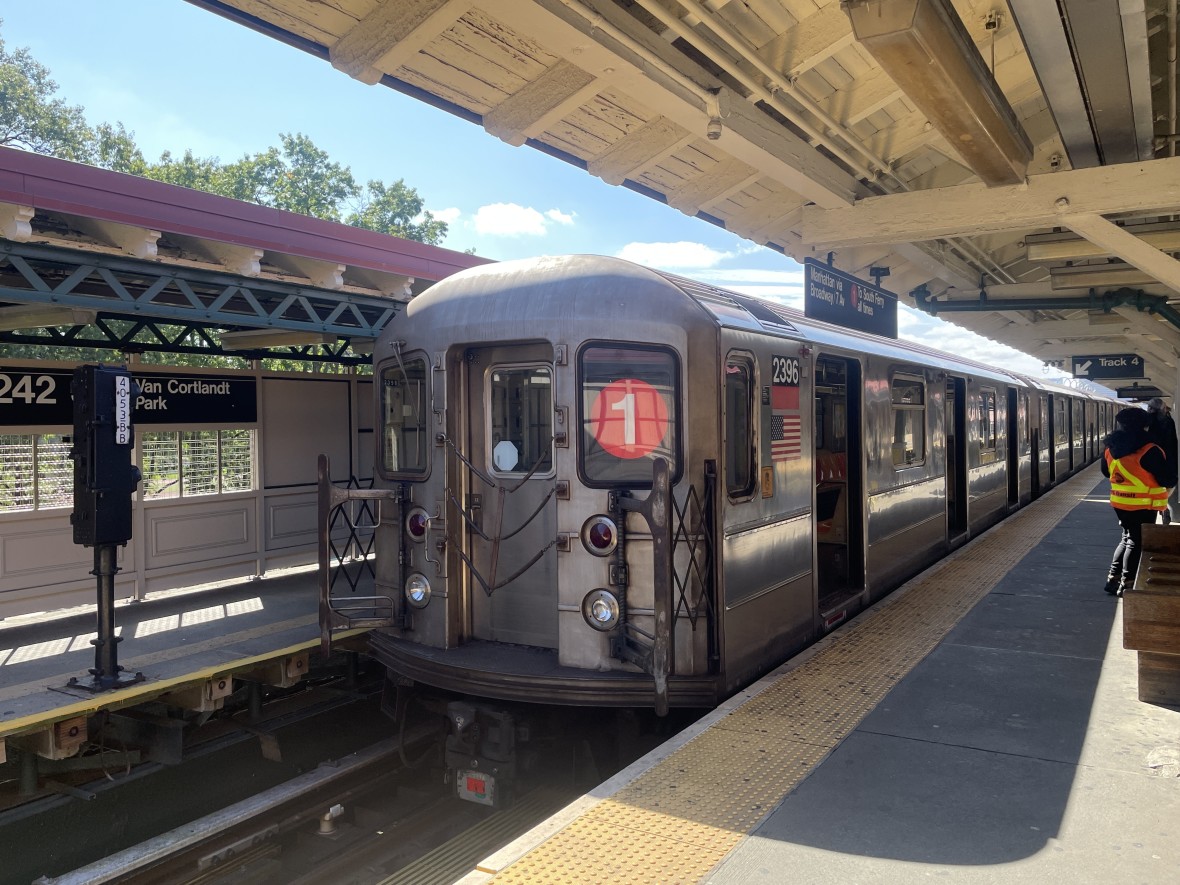


The station here is also worth spending some time at — it's on the National Register of Historic Places! This is the last remaining late Victorian Gothic elevated station in the system, and still has scrolled signage and wooden station floors.
The station was designed by Heins & LaFarge, and still holds "pretty unusual" features, according to the New York Transit Museum's Jodi Shapiro.
"The center platform’s canopy supports are wood, which adds to the charm," Shapiro notes. "These stations were designed the way they are because The Bronx was 'the country' in the early 1900s, and it was hoped that building subway lines would move more of the population out of crowded Manhattan and into places such as The Bronx and Queens."


Artwork was also brought to the station's design. "Since the underground stations were getting mosaics and terra cotta ornamentation, William Barclay Parsons"—the chief engineer of the Interborough Rapid Transit Company—"and Heins & LaFarge felt that elevated stations should get structural ornamentation that was equally beautiful," Shapiro explains. "There’s decorative (but functional) light fixtures, door lintels, grates, railings, and structural beams."
To exit on the station on the park side, you'll cross over what looks like New York City's answer to a bucolic covered bridge. And you'll find original design elements all the way down to street level. That includes decorative ironwork at the staircase entrances, which Shapiro says "is a great example of Heins & LaFarge’s Contract One aesthetic, which was informed by both the Budapest Metro and the City Beautiful movement."
Getting There

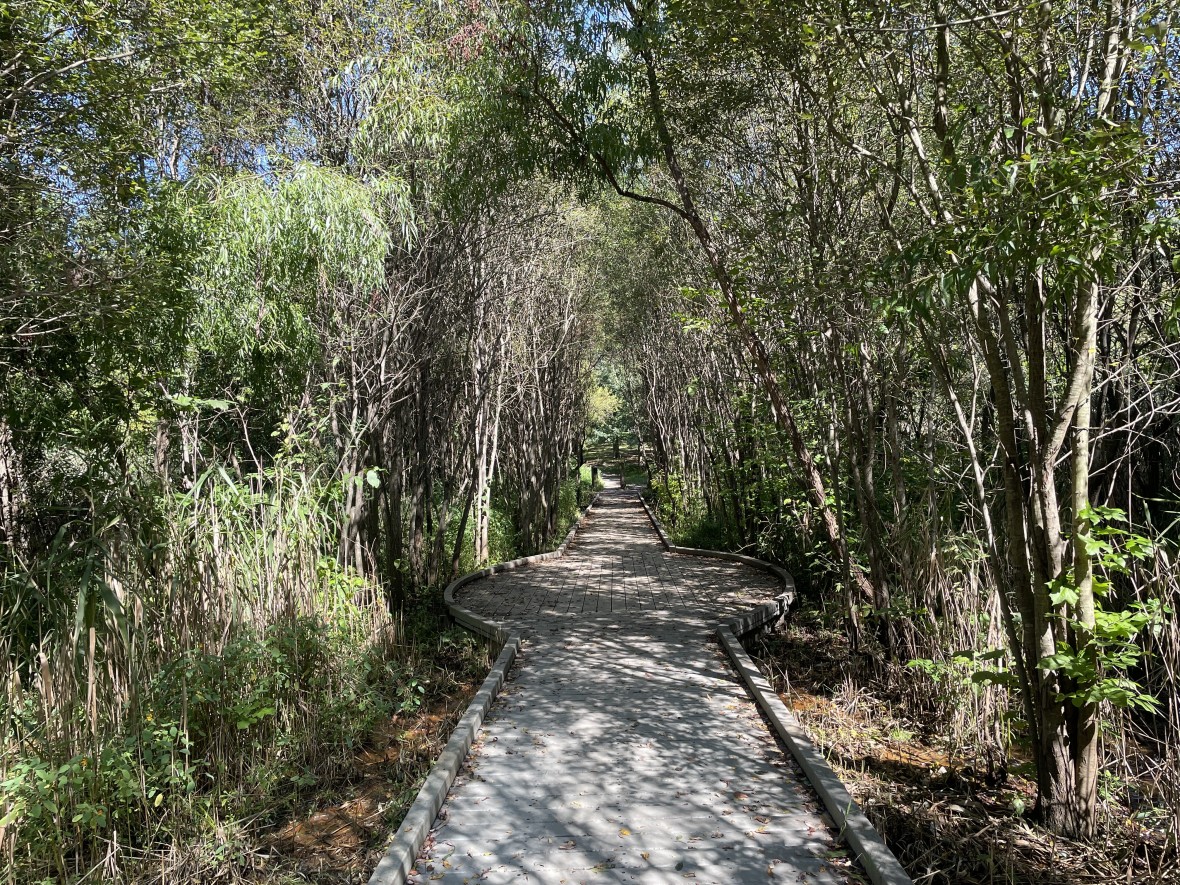
Enter Van Cortlandt Park at the bottom of the 1 train subway steps and walk straight until the path comes to a fork. Go left here and follow the John Kiernan Nature Trail, and in just a few minutes you'll find the stones (but blink and you may miss them as you walk on the paved pathway nearby!).
Tip: If you enter "Grand Central Stones" into your phone map, they will show up and you can follow that path!
Subway
Take the 1 to Van Cortlandt Park-242 St and the Grand Central Stones are just a 10-minute walk away
While You're There...
Before you get back on the subway, take a short 7-minute walk along Broadway to Lloyd's Carrot Cake (6087 Broadway) and pick up one of their legendary cakes (or just a slice). While their cakes go for around $80 online, if you stop by the shop a large cake will only cost you $20 — and they even have a version that comes without raisins and nuts. The staff here is delightful and it's certainly worth the short walk over before you head back on the 1 train!



